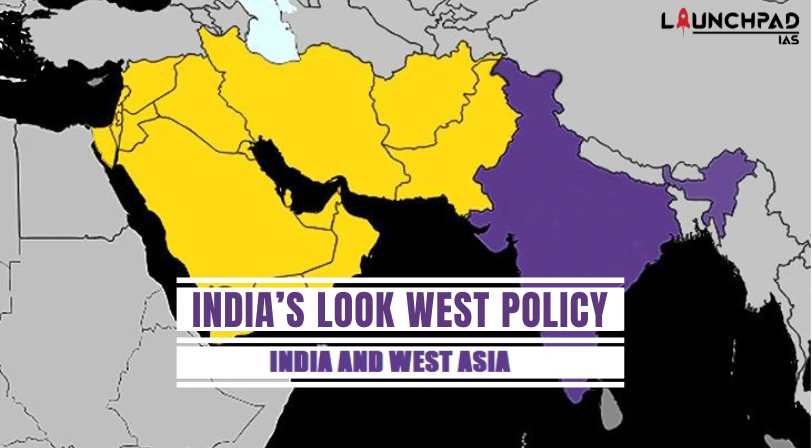Introduction
- India’s Look West Policy is a strategy adopted by India to strengthen its relations with Arab nations, Iran, and Israel. It aims to promote economic, political, and cultural ties with these countries. It also aims to enhance cooperation in various fields such as trade, energy, security, and technology.
- India seeks to pursue a multi-dimensional engagement with West Asia. While much focus is often given to India’s ‘Act East’ policy, India’s ‘Look West’ policy too is evolving rapidly.
- Sustained high-level engagements have ensured that India’s voice is becoming an important one in the region.
- India has established independent links with estranged players in the region such as Saudi Arabia, the UAE, Qatar, and Iran.
- The relations traditionally were based on energy and the Indian Diaspora, but now India seeks to maintain relations to be a significant power in the world.
- Oman has been a long-standing partner of India in West Asia, where Indians constitute the largest expatriate community.
- With the Indian Ocean becoming a priority focus area for New Delhi, Oman’s significance is likely to grow.
- Naval cooperation has already gained momentum with Muscat giving berthing rights to Indian naval vessels to fight piracy in the Gulf of Aden.
- India and Oman are enhancing cooperation in the fields of health, tourism, and peaceful uses of outer space.
Significance of Look West Policy
- India is in a good position to be trusted by all the major factions in the Middle East; it has good relations with Iran, Saudi Arabia, Israel, Iraq, and the Gulf States.
- The numbers on trade between India and the Gulf countries are impressive. There are large Indian communities in the Gulf States.
- The remittances sent by Indian labor migrants have added to the economic relationship.
- West Asia is crucial for stability and economic growth in India because around 65% of our oil and more than 80% of our gas supplies come from this region.
India’s Role
- Palestinian President Mahmoud Abbas called for a potential Indian role in the West Asian peace process.
- Palestine, which has turned away from a US-led mediation, now counts on India to realize the two-state solution.
- India remains strongly committed to the establishment of a viable Palestinian state, living at peace with Israel.
- India is looking for renewed alignments, investment opportunities, and diaspora outreach in the region.
- India acts as an important market for the Gulf oil economies, their aviation companies, and a provider of technology and human resources.
- Joint military exercises to control “non-State actors”.
- Today, New Delhi is building infrastructure in Iran while also sharing intelligence with Saudi Arabia.
Containing China
- China and India, as two emerging powers, are yet to articulate a clear road map for the region.
- With China’s expanding footprint in the Indian Ocean Region, India must strengthen security ties with littoral states.
Concerns / Challenges
- ASEAN has been the vehicle for India’s expanding partnership with Southeast Asia, but there is no similar forum in the Middle East.
- Ideological, political, and religious divisions in India over the Middle East have long complicated Delhi’s thinking of the region.
- Instability in the region due to ISIS.
- Growing rivalry between the Sunni Arabs and Shia Iran.
Way Forward
- India’s West Asia engagement must focus on delivering on its commitments and strengthening its presence as an economic and security partner.
- This is crucial for India as America’s stakes in the region are declining.
- India as an emerging power needs to articulate a clear road map for the region.
- With growing conflicts between countries in the region, India will have to be more pragmatic in its approach towards the region.


